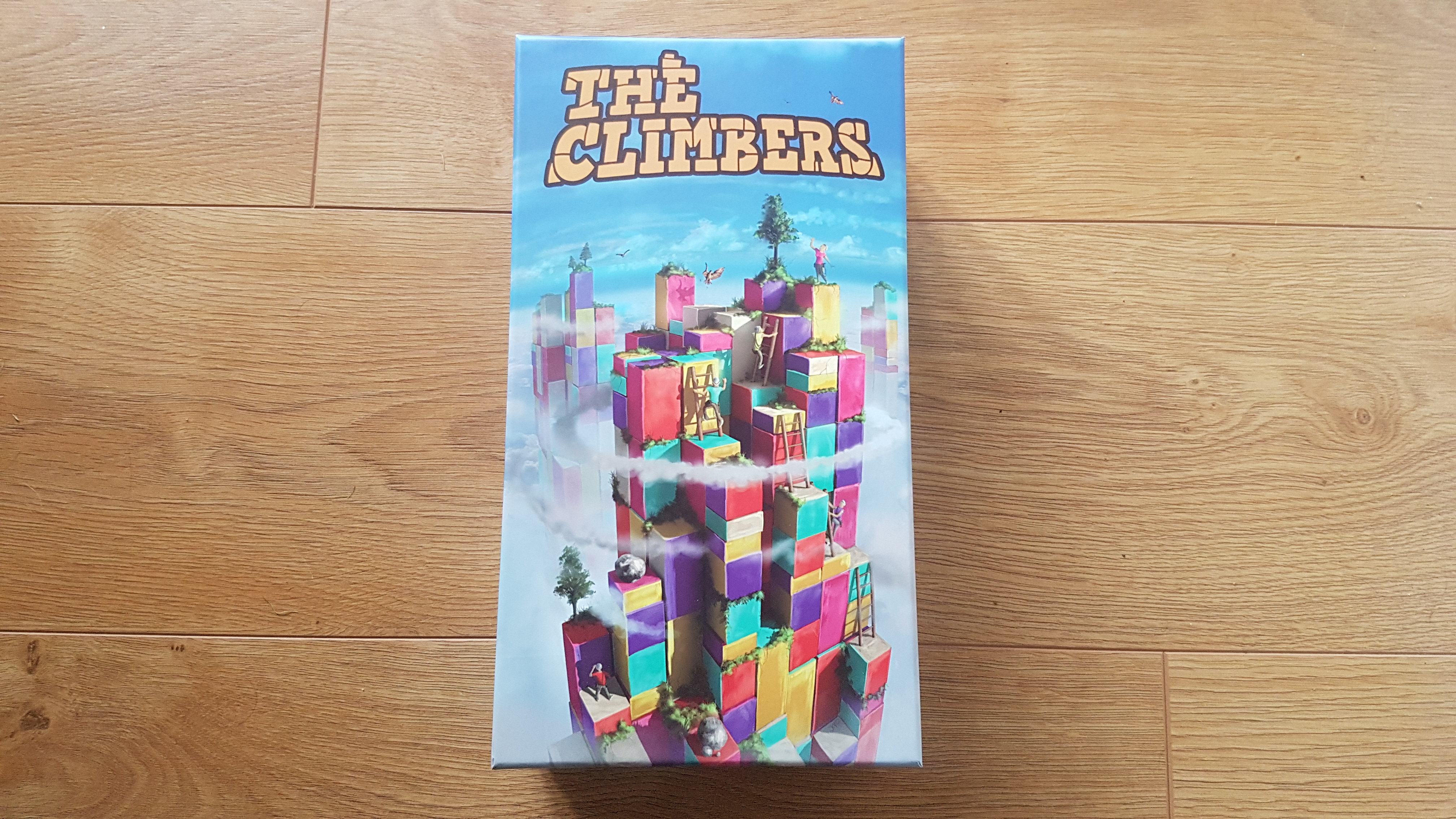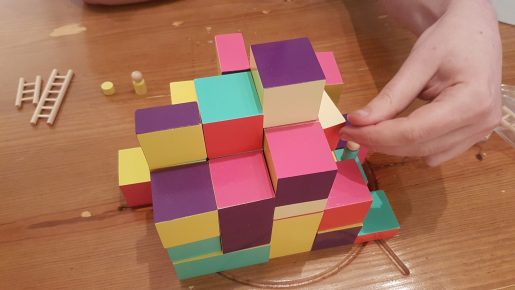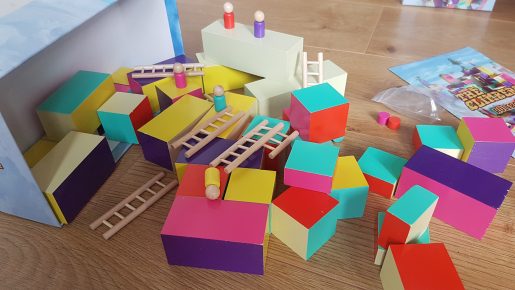The Climbers, originally released back in 2008, is an abstract racing and climbing board game from designer Holger Lanz and publisher Simply Complex. The title sees 2 – 5 players striving to climb up a colourful cube-based structure, that is designed differently each and every game. Players are tasked to simply get to the highest level of the structure, though block movement and blocking does factor in. So, is this a title that’ll ascend onto board gaming shelves? Let’s find out!
Players start the game off by constructing a central structure. Two tall neutral cuboids are stood in the centre of the table and players randomly place the blocks hiding the starting blocks and building out the structure. The only placement rules that apply to this construction, that stay the same throughout the game, are: a gap cannot be created below a building block, a block must be adjacent to (not including diagonally) or directly above another block and a block cannot overhang.
Each block has all six colours on it, five of which are player colours. The reason why the initial placement is balanced is that only after the construction is finished are player pieces, thus colours, assigned. Each player gains a player piece and blocker token of their own colour, a short ladder and a tall ladder. Now players can start to work out what route up the structure they might take.
A climber can only ever climb up a height shorter than the player piece and only onto face up side of a block that matches either their player colour or the neutral colour. If possible, a climber can make a huge charge up the structure, as on a turn a player can move as much as they are capable of, though movement can only ever be upwards. With the majority of the blocks double the height of the player pieces it isn’t often that huge movements will be possible and before long climbers will faces only blocks that they cannot usually climb.
Thankfully, each player has two different length ladders at their disposal. These ladders are one-time use abilities that players can use to climb either double or quadruple the normal height. Slightly unintuitively, as they are solid ladders, these are instantly removed and discarded; rather than staying on the structure for others to sneakily utilize. With only two ladders there would be a lot of occasions that players couldn’t move unless they could move blocks. Players can at any point on their turn, before, after or during movement, move a single unoccupied and unblocked block. While it is helpful to build up a route for your climber to make it to the structures peak, it’s best not to plan too far ahead or you’ll see plans disrupted by opponents.
Once the active player has moved they can then place their blocker token onto any block on the structure. From that point until the start of their next turn that block becomes inaccessible and cannot be built on or moved. Like with the ladders, the blocker tokens are a one-shot ability and when it’s your turn again the token is removed form play. After the active player has completed their turn each player, in turn order, gets to do any available movement including via ladders, though they cannot move a block. Play continues until none of the players can move upwards on their turn. At this point whomever is highest wins, with ties split by the first to reach the top height.
There is something strangely satisfying with the chunky wooden blocks, that come in different shapes and sizes. Part of this is how such simple shapes, with the use of colour, can add together to create a puzzle in front of you. On top of this, is the way the puzzle grows and changes in front of players, as each turn a block is shifted, rotated or flipped. Getting hands on with these the blocks each turn adds something, an almost hands on feel, that is absent from many puzzle games. The only oddity is the neutral colour is a rather off-white colour. A super light grey or white would just have rounded the colour palette of slightly cleaner and nicer!
So, the components are solid, if not hugely inspiring. Still, if there is one thing the components do well it’s the table presence that The Climbers gives. The small mountain of colourful blocks for players to climb sits proudly at the centre of the table, not only making it intuitive for players to get to the top of it, but also for capturing the attention of potential players. Potentially, it is the way the blocks harps back to the building blocks children play with; either way, they seem to attract interest.
The Climbers comes in a box that is crammed to the lid full of components and it feels like it crams a lot of replayability into such a simple design. The rules are not complex, but players are constantly offered choice, be it from the block placement, movement or the ladder usage. Thanks to the ability to move at the end of other players’ turns everyone stays engaged, hoping the active player opens up a route to take. As a result of this, while I would normally get frustrated by increased player counts altering the board massively between turns, it is rather constricting and slow going when at the lowest player count of 2 nothing much changes from one turn to the next. However, aside from the pacing at 2 players and the off-white neutral colouring, The Climbers is a solid puzzle experience, albeit one that may not constantly be taken off the shelf.
[Editor’s Note: The Climbers was provided to us by Asmodee UK for review purposes. The game is currently available, so make sure to check it out at your local UK board game store. Find your local store here]




